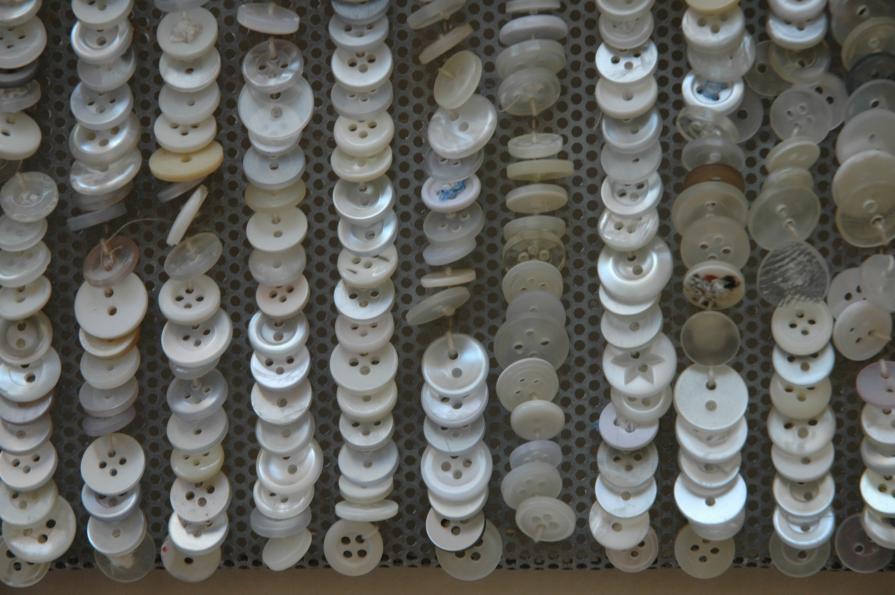Ice Shelf / Plain as a Glass of Water
I researched the expedition participants' own words and images, where possible focusing on the lesser known, excluded and forgotten rather than the primary or more well-known stories of the expeditions. During this research I became increasingly aware of the enjoyment of the domestic as experienced by those expedition members. In a letter, Frederick Hooper, a steward on Scott’s last expedition, wrote on 8th February 1912 that:
'I’ve washed all my clothes, about half a dozen suits of underclothes and have been mending them today. I can tell you I can do anything with a needle.'
Within this context, the first work in this series Ice/Plain as a Glass of water responded to a specific physical landscape within the Antarctic that had been pivotal in that period of exploration. The Ross Sea Ice Shelf is a roughly vertical face of ice about 600 km long by between 20 to 50 metres in height above sea level.
This first work was 7000mm x 500 x 20mm and made of found predominantly white and off-white secondhand buttons sewn onto bases or panels constructed from zinc gauze. The buttons are decorative and form a very beautiful seductive surface with the patina of use from everyday shirts and pants. The zinc sheeting onto which the buttons are sewn has been punched with a regular pattern of holes to form the gauze. These perforations have the function of allowing through or separating, and locate the point of change or transition where something is held but something else can pass, such as the separation of the air to ventilate the meat safe and yet keep the flies on the outside. The ice shelf was also such a point of transition in the expeditions, holding as well as allowing to pass. The second work in the series Ice Shelf / Plain as a Glass of Water formed from the same button panels consists of a freestanding distorted wall 3000mm in height and approximately 12,000mm in length.









Comments 0
Say something